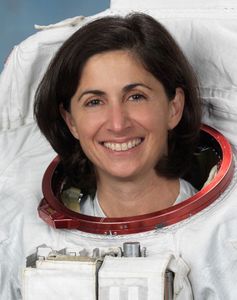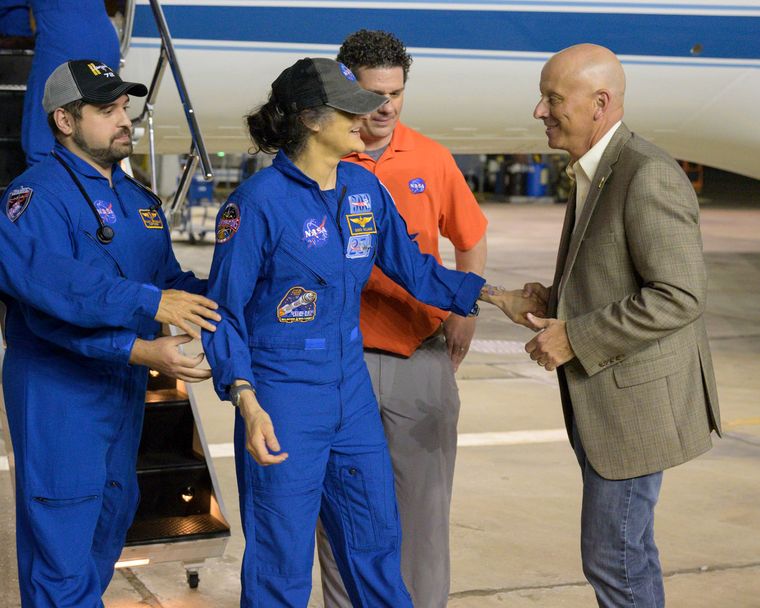AN ASTRONAUT is prepared for the unpredictable. When Suni’s (Sunita Williams) colleague Butch Wilmore said they had planned for 10 days stay at the International Space Station, they were [actually] prepared for a longer stay. (They eventually spent 286 days in space). The bulk of our training is on how to deal with unexpected situations, particularly emergencies. This never turned into an emergency. This is just one of the potential alternatives, when the need was to stay for a longer duration.
Suni and Butch did amazing, important, meaningful work during their stay on the ISS. Though I am not in the NASA astronaut office anymore, Suni is a friend and we have known each other for a long time. We keep in touch and we exchanged emails even when she was on the space station. In an interview, she said space was her happy place. The way Suni entered the space station at the start, she was as excited as a little kid. She carried that energy all through her flight.
The experience closest to living and working in space is living in Aquarius, an undersea research station (off the coast of Florida), as part of astronaut training. The Aquarius experience is aimed at taking trainees out of their comfort zone and to teach them how to work better to solve problems. Aquarius is about the size of a big school bus and sits on the sea floor [at a depth of about] 65 feet. The lab has normal oxygen flow, but those inside cannot go out without donning special suits. It is a real extreme environment. For instance, you cannot swim to the surface to escape it, because, once you are down there for an hour, your body is saturated by nitrogen and you might kill yourself if you attempt to swim.
So, you have to deal with the things that might go wrong. Ensure that the vehicle is in good configuration and that the crew is in good condition; understand your strengths and weaknesses and also those of your crew members. A big thing is accepting your weaknesses. It is difficult to do. You will have to leverage all your strengths to deal with an unpredictable situation. We do a lot of that expeditionary training.
Even during a simulation of what is supposed to be a normal day in space, mission control and the training team always presents us with some challenge. So, you get to a point where you understand how you can bring your strengths to the table and solve whatever the problem might be. Our training, from living under water to learning to space walk, readies us for unpredictable situations.
I saw Suni and Butch living out that training aboard the space station. Besides their training as NASA astronauts, Suni and Butch are test pilots. They have experience in high performance aircraft, which is an equally challenging environment. Though many astronauts are not test pilots like Suni and Butch, we are appreciative of the lessons we learn from them during training. Their training as test pilots and astronauts put them in a wonderful position to deal with an extended stay on the space station.
As far as the mental aspect goes, an astronaut is prepared for the fact that things can change. There have been similar cases of astronauts who had to prolong their stay as the return vehicle was not ready. They have had the preparation to adapt to that change. I feel this kind of change is more difficult on the families back on earth. Suni and Butch are mentally strong and were well equipped for that long stay in space.
Also, we learn new things about the impact on our bodies because of prolonged stay in space. We continue to employ new countermeasures to help the body. Exercise is something that helps us in space. It is essential to maintain bone density and bone health. I feel that Suni might just have run a marathon while she was up on the ISS. She is a runner and there is this very fine treadmill on the ISS.
When we get back, the medical and rehabilitation teams have plans for us. It depends on how long you stay in space. There could be more extended rehabilitation time. As far as my experiences go, they check how you get up, and walk, and if you can, they will check what kind of mobility you have. They will draw blood and they will pull all kinds of samples from your body. They will do whatever tests they can to see how your body has changed since you left.
The broader aim is to make your body readjust to the earth’s gravity. You are not kept in isolation and can go home, but with regular back-and-forths for tests and check-ups by the flight medicine teams. The teams want you back in shape. We need to do a lot of physical activity and exercise to help our bones and muscles readjust to gravity.
Everybody feels different and I do not know how Suni and Butch feel. Both of them have had long duration space flights before and know what to expect.
Generally, everybody feels heavy when they get back as gravity gets you and some people feel a little nauseous and unsteady. But, it is amazing how quickly our body and brain recover. The rehabilitation programme usually runs for 45 to 60 days. It was around 45 days for me.
You have to give your body time to get back to the routine, aided by physical trainers and regular medical tests. I am confident that both Suni and Butch will do great and that we will learn a lot from them.
―The author is a former NASA astronaut with 104 days in space under her belt.
AS TOLD TO ABHINAV SINGH




